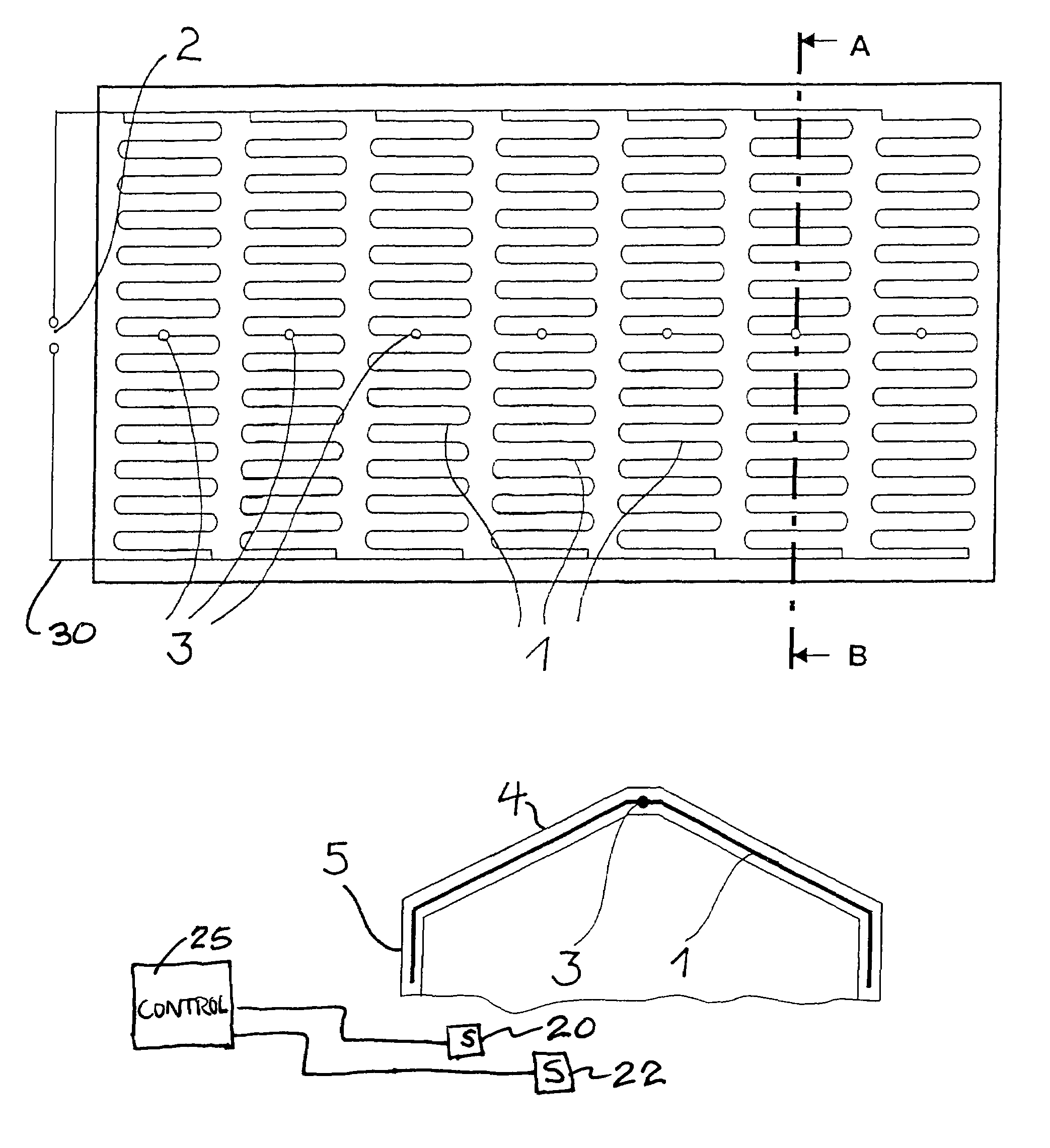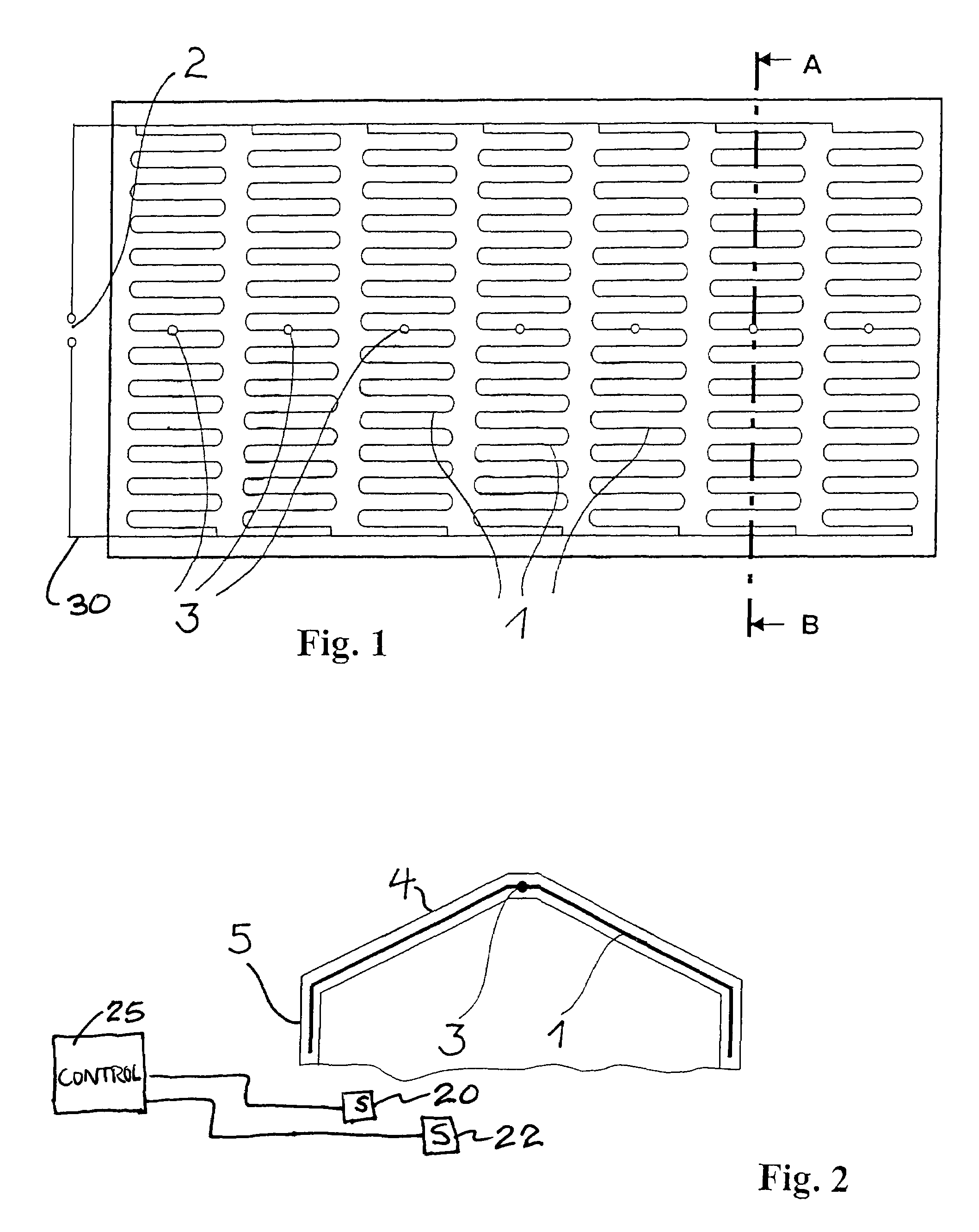Heatable incubator hood and process for regulating the tempurature of an incubator hood
- Summary
- Abstract
- Description
- Claims
- Application Information
AI Technical Summary
Benefits of technology
Problems solved by technology
Method used
Image
Examples
Embodiment Construction
[0020]Referring to the drawings in particular, FIG. 1 shows a top view of an incubator hood with heating wires 1 and temperature-dependent electric resistors 3. A total of seven heating wires 1 are arranged in parallel. They are wound through the incubator hood in uniform loops. The heating wires 1 are connected to a power source 2 arranged outside the incubator hood. A temperature-dependent electric resistor 3 each is located on the middle path length of each heating wire 1.
[0021]FIG. 2 shows the incubator hood from FIG. 1 in the lateral cross section along line A-B. The vertically extending limiting surfaces 5 and the limiting surfaces 4 sloped by about 30° against the horizontal in the manner of a saddle roof are shown. One of the temperature-dependent electric resistors 3 is shown on the ridge of the saddle roof.
[0022]In the preferred embodiment the heating wires 1 are connected in parallel. One temperature-dependent electric resistors 3 is arranged in electrical connection with...
PUM
 Login to View More
Login to View More Abstract
Description
Claims
Application Information
 Login to View More
Login to View More - R&D
- Intellectual Property
- Life Sciences
- Materials
- Tech Scout
- Unparalleled Data Quality
- Higher Quality Content
- 60% Fewer Hallucinations
Browse by: Latest US Patents, China's latest patents, Technical Efficacy Thesaurus, Application Domain, Technology Topic, Popular Technical Reports.
© 2025 PatSnap. All rights reserved.Legal|Privacy policy|Modern Slavery Act Transparency Statement|Sitemap|About US| Contact US: help@patsnap.com



